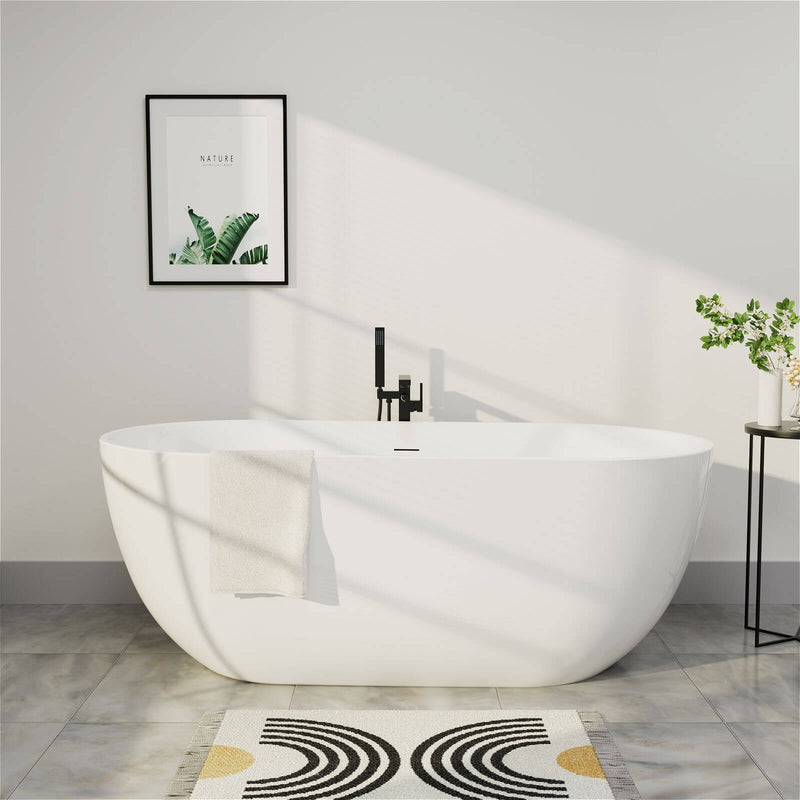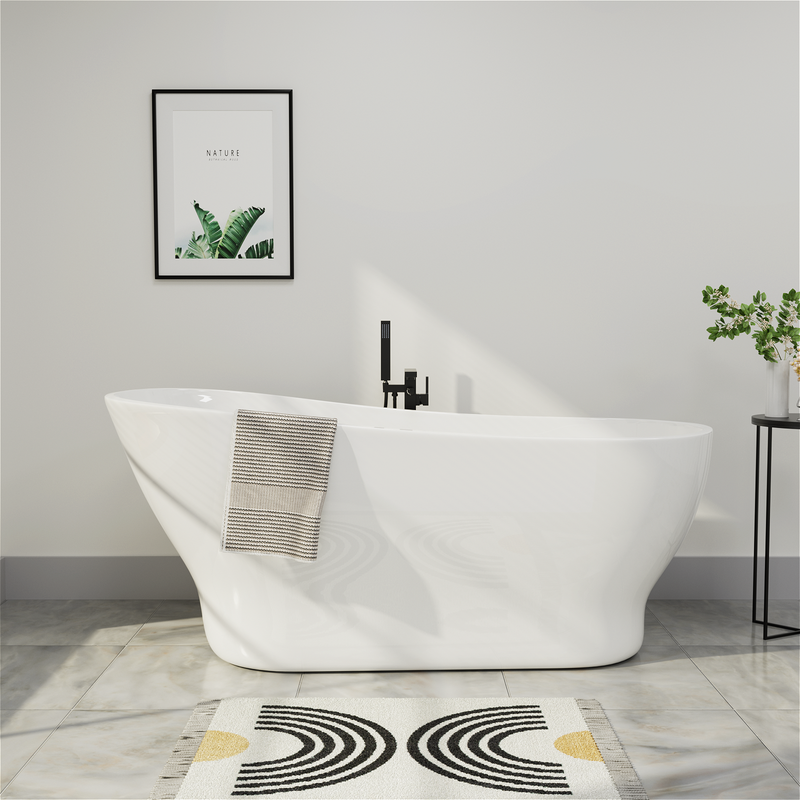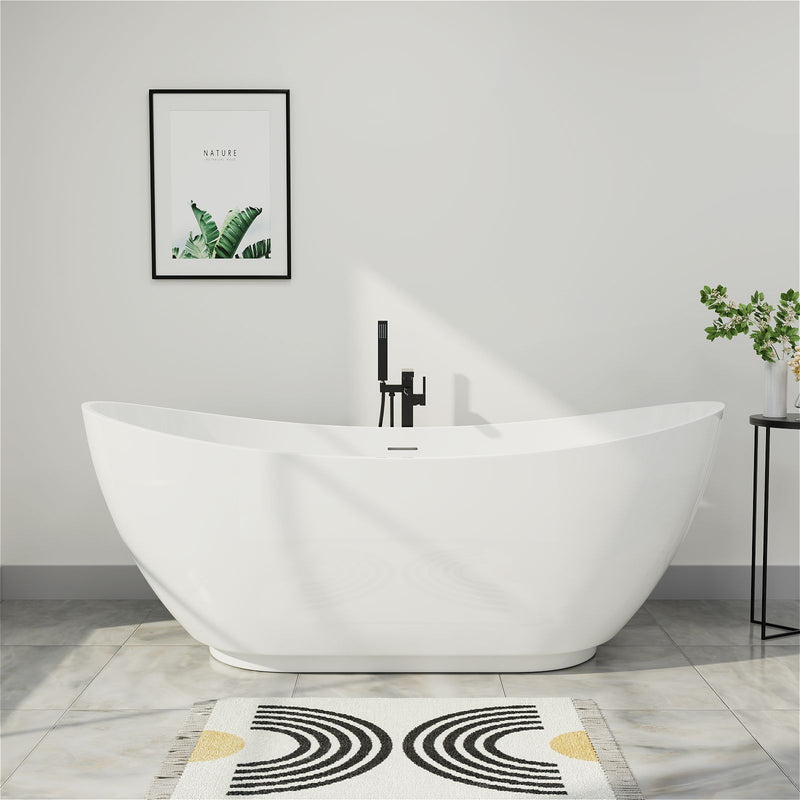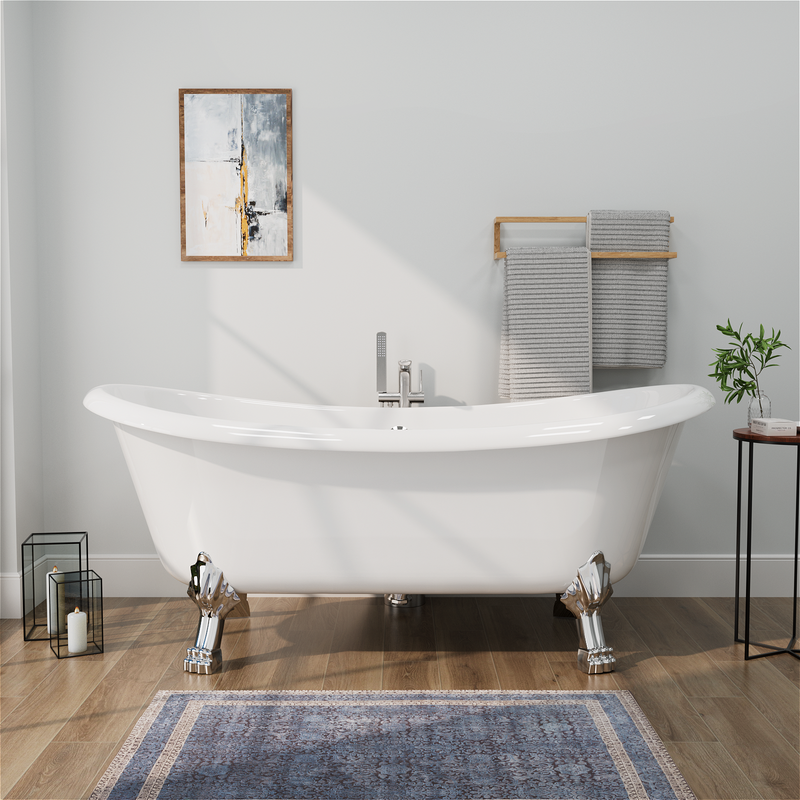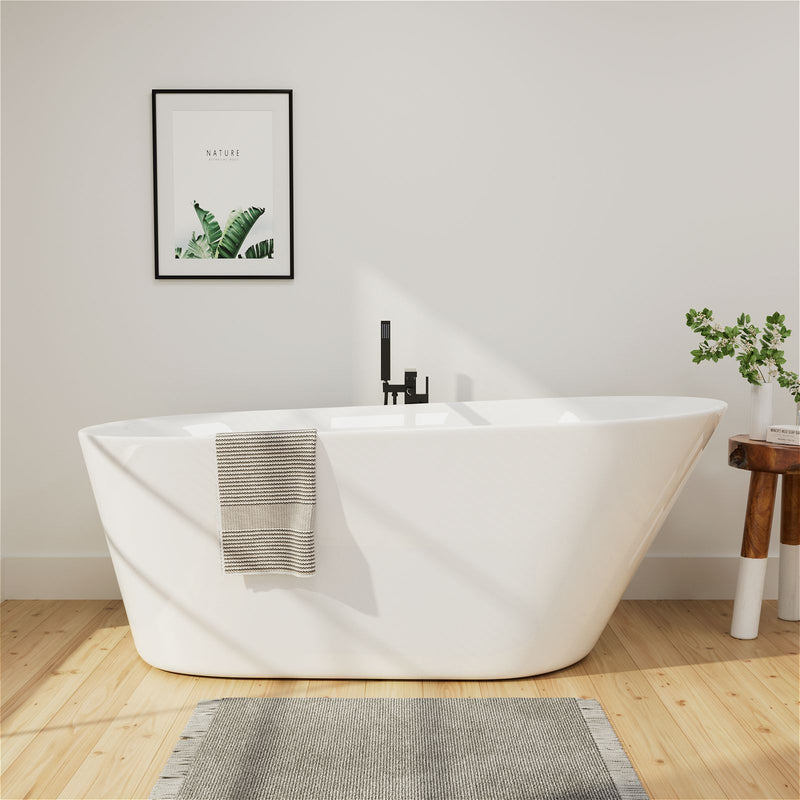Bathroom should be the most relaxing moment in life, but for many elderly people, traditional bathtubs may become a daily challenge. The design of bathtubs suitable for the elderly is to change this situation. It starts from the physical characteristics and actual needs of the elderly and makes bathing safe and comfortable through humanized details. This article will show you how to turn bathing, a daily trivial matter, into a wonderful time to enjoy life through thoughtful considerations such as anti-slip design, convenient entry and exit, and intelligent assistance. Here, every design detail reflects a deep understanding of the needs of the elderly, allowing function and care to be perfectly integrated.
Safety First: Anti-Slip and Support Design
As we age, safety issues during bathing become particularly important. The first consideration in bathtub design is how to minimize the risk of slipping. The bottom of the bathtub should be treated with a special anti-slip texture. This texture should not be too rough to cause discomfort, but should have enough friction to prevent slipping when standing. The ideal anti-slip surface should give the user a slight "grip" when standing barefoot, while being easy to clean and not hiding dirt.
There should be multiple auxiliary support points inside the bathtub, usually including horizontal handrails on the walls on both sides and vertical support rods inside the bathtub. The optimal installation height of these support devices needs to be carefully calculated according to the average height of the user. Generally, the handrail is about 75-85 cm from the bottom of the bathtub. The diameter of the handrail is preferably 3.5-4.5 cm. If it is too thin, it is not easy to grasp, and if it is too thick, it may not be able to hold it firmly. In terms of material selection, stainless steel wrapped with non-slip rubber is an ideal choice, which not only ensures strength but also provides a warm touch.
Convenient Entry and Exit: Height and Threshold Optimization
The high step-in design of traditional bathtubs poses a considerable challenge to the elderly. The improved bathtub should adopt a low threshold design, and the optimal step-in height should not exceed 35 cm, which is equivalent to the height of two steps of ordinary stairs. It is more ideal to be equipped with an adjustable height hydraulic lifting system, allowing users to sit on the edge of the bathtub first and then slowly lower it to a comfortable position.
Bathtub door design is another important innovation. Side-opening or upward-lifting bathtub doors can significantly reduce the difficulty of stepping in, and the door width should be at least 40 cm to ensure comfortable entry and exit. Door sealing technology is crucial, and must ensure that it is completely waterproof and opens and closes smoothly. The door handle should be clearly located and ergonomic. It is best to use a long strip design to facilitate force application, and avoid using round handles that require twisting the wrist.
Comfort Experience: Ergonomics and Temperature Control
The internal shape of the bathtub needs to take special considerations into account the physical characteristics of the elderly. The backrest angle is most comfortable at 110-120 degrees, which can support the back without causing difficulty in getting up. The length of the bathtub should not be too long, preferably about 1.5 meters, to ensure that the user can easily put his feet against the other end to get up. In terms of depth, the water surface should just cover the shoulders after filling. Too deep will increase buoyancy and cause instability in sitting.
Water temperature control is the key to a comfortable bath. The ideal bathtub should be equipped with a constant temperature system accurate to ±1°C to avoid discomfort caused by water temperature fluctuations. The water temperature display should use large numbers, preferably with high-contrast colors (such as black background and yellow letters) for easy identification by people with impaired vision. The anti-scalding function is essential. When the water temperature exceeds 40℃, the hot water supply should be automatically cut off or an alarm should be issued.
Auxiliary Function: Intelligent and Humanized Details
Modern technology brings many conveniences to the bathtub for the elderly. The automatic water filling system can preset the water level and water temperature to avoid bending over to operate the faucet. The water level sensor can automatically stop the water when the water is full to prevent the risk of overflow. The emergency call button should be set in multiple accessible locations inside the bathtub. The button itself should be waterproof and have a diameter of not less than 4 cm.
The detailed design of the bathtub edge is equally important. The widened upper edge (at least 15 cm wide) can be used as a temporary seat to facilitate the user to transfer into the bathtub while sitting. The edge material should be slightly soft to avoid bumps and injuries. It is best to set up several small storage grooves on the inside of the bathtub to facilitate the placement of small items such as soap and glasses to avoid bending over to pick them up.
Space Planning: Dynamic Lines and Auxiliary Equipment
The space planning around the bathtub directly affects the convenience of use. A transfer area of at least 90 cm wide should be left on one side of the bathtub to facilitate the operation of wheelchair users and caregivers. The floor material must be non-slip. It is recommended to use professional non-slip tiles with a friction coefficient greater than 0.6. The shower head should preferably be designed with an adjustable height slide bar, which can be used both standing and sitting.
The location of auxiliary equipment needs to be carefully arranged. Bath chairs should be height-adjustable and with backrests, and placed in a position that is convenient for transfer into the bathtub. The non-slip mat should not only cover the bottom of the bathtub, but also extend to the entry and exit area. Towel racks and bath supplies racks should be set in a position that is easy to reach when sitting to avoid unnecessary standing and bending.
Psychological Care: Create a Relaxing Atmosphere
In addition to safety and practicality, the psychological aspect of the bathing experience is equally important. The color of the bathtub should be soft and natural, such as light blue, light green or beige, and avoid dazzling pure white or depressing dark colors. The lighting design should take into account both brightness and softness. The main lighting should be anti-glare, supplemented by dimmable atmosphere light strips.
The sound environment should not be ignored. Good sound insulation design can enhance the sense of security, and the sound of water flow is most comfortable when it is controlled below 45 decibels. Consider integrating a simple background music system to play soothing natural sounds or light music. Visual guidance design is helpful, such as using contrasting color signs at key locations to help the elderly clearly identify entry and exit routes and functional areas.
Future Trends: Innovative Directions for Aging-Friendly Design
Aging-friendly bathtub design is moving towards a smarter and more personalized direction. Contactless control systems are becoming popular, and water temperature and water level can be adjusted through gestures or voice, reducing complex operations. Health monitoring functions are emerging, and some bathtubs can already detect basic vital signs such as heart rate and blood pressure, and the data can be synchronized to family members or doctors.
Material innovation is also worth paying attention to. Self-healing coating technology can automatically repair small scratches and keep the surface smooth and hygienic. The application of antibacterial materials can effectively inhibit the growth of bacteria, especially suitable for the elderly with weak immunity. Modular design allows the functional configuration to be adjusted according to the user's physical changes, extending the product's applicable period.
FAQs
What is the optimal water depth for the elderly bathtub?
The ideal water depth should be just above the shoulders when sitting (about 40-50 cm), which can ensure comfort and prevent difficulty in getting up due to excessive buoyancy. Too high water level may also increase the burden on the heart and lungs.
How to help elderly people with limited mobility get in and out of the bathtub?
In addition to choosing a low threshold design, you can install a special transfer board for the bathtub, or use an auxiliary device with a rotating seat. The safest way is to equip a professional bathing chair, sit on the edge of the bathtub first and then transfer into it.
Is the constant temperature system really necessary?
It is very necessary for the elderly. As they age, their skin becomes less sensitive to temperature and they are easily scalded without knowing it. The constant temperature system can ensure that the water temperature is stable within a safe range (recommended 38-40℃) to avoid accidents.
Where should the bathtub handrails be installed?
The main handrails should be installed on both sides of the long side of the bathtub, and the height is determined according to the height of the user's elbows when sitting (usually 75-85 cm from the bottom). Vertical support rods should also be set on the inside of the bathtub to facilitate leverage when getting up.
How to clean the bottom of a non-slip bathtub?
Use a soft-bristled long-handled brush with a neutral detergent to scrub regularly. Stubborn stains can be gently wiped with baking soda paste. Avoid using steel wool or strong acidic detergents to avoid damaging the non-slip texture. Rinse thoroughly after cleaning to ensure that there is no detergent residue.

